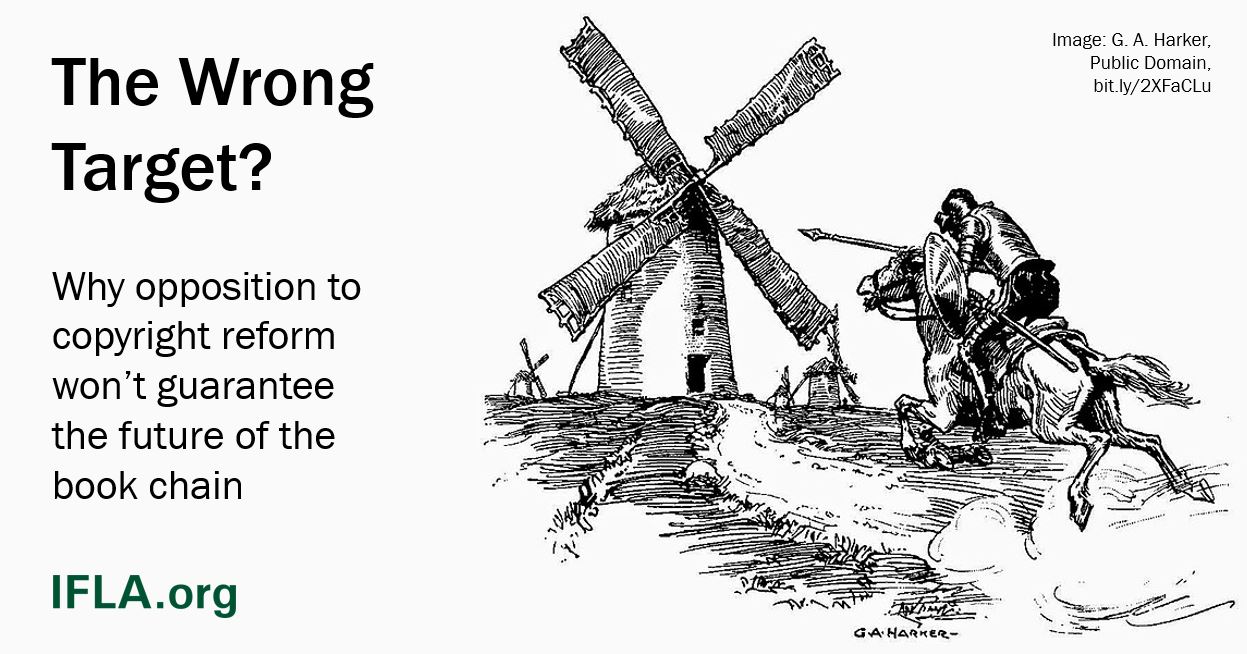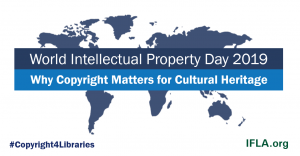As will have been highlighted by many of the posts made today – World Copyright Day (23 April), copyright has had a major influence on the way the modern creative industries have emerged.
It has spread way beyond its beginnings in the early 18th century as a limited protection lasting just 14 years, and now reaches into almost every corner of our lives.
It is so powerful, indeed, that even from the beginning of international law-making in the area, it was recognised that it should not be absolute. Just as it enabled authors and creators – or often the companies that bought and traded their rights – to earn a living, it could also bring dangers.
Copyright legislators have therefore sought to intervene in order to help the system work most efficiently. This comes both in terms of finding ways to simplify the way the system works where it is appropriate to charge for access to – or use of – works, and to create and enforce exceptions there would otherwise be market failure.
So how have things been developing since the last World Copyright Day? Below we set out a few trends:
Sorting out the Basics: despite these being seemingly core elements of free speech, it’s not in every country that there is the possibility freely to quote someone else, or to carry out criticism, make jokes, or review. The lack of such rules can allow copyright too easily to become a tool of censorship and control.
Fortunately, there have been steps forwards in Kenya and Myanmar (which previously was working with a law from 1911 inherited from the colonial period). In both countries, exceptions allowing for quotation, parody and criticism have been put in place.
However, some countries still lag behind, notably in Latin America where a number of states still have no meaningful copyright law containing exceptions. Long efforts by the library sector in Uruguay have been frustrated for now, with the government simply pushing through an unnecessary term extension, while it remains unclear what the Brazilian government will propose. Argentina too, beyond a welcome move to allow enjoyment of the rights created by the Marrakesh Treaty, still has some way to go before a full and modern copyright law is in place.
Enabling Digital Uses: a core focus of much library advocacy around copyright reform has been the drive to update copyright laws for the digital age. Provisions in existing laws – limiting the number of copies taken, specifying a format or method to be used, or explicit exclusion – can all make it impossible for libraries to take advantage of new opportunities.
There has been progress over the past year. Text-and-data mining (TDM) has proved to be a continuing area of uncertainty for many, given that while copies are made, these are usually exclusively part of the analysis process.
To resolve this, we have seen Switzerland and Ireland introduce or strengthen laws which make it clear that this is permissible, at least for non-commercial purposes. Singapore has gone further still in its own proposals, underlining that it should be possible regardless of the purpose, given that TDM causes no harm to original markets, and efforts to control it would likely limit innovation. Myanmar’s new law also opens the way to TDM.
Canada’s Industry, Science and Technology Committee also called for a broad TDM exception in its review of the country’s 2012 reforms. As focus increases on artificial intelligence – which often draws on TDM in order to train machines – it can be hoped that other governments will understand the need for strong exceptions in order to facilitate innovation in this space.
Similarly, there have been steps towards facilitating digital preservation. Myanmar, Switzerland and Ireland have both expanded exceptions to allow for preservation copying through digitisation, giving them more scope to safeguard their history for the future. Draft laws in the Philippines look to do the same.
However, not all is positive, with Kenya missing an opportunity to expand its own preservation provisions. Sadly, this will help continue the imbalance in laws that will give institutions in some countries a greater ability than others to fulfil their mission as guardians of memory.
Closing Loopholes: a major concern linked to greater reliance on digital resources is the opportunity that technological protection measures (TPMs), and the primacy of freedom of contract provide to hollow out exceptions.
TPMs can create practical restrictions on how libraries or their users make use of works, even preventing activities that would ordinarily be protected. Badly drafted laws will nonetheless criminalise the circumvention or removal of such measures.
Meanwhile, unless governments make it clear that they are not enforceable, the terms of contracts for digital content can be used to forbid uses, such as lending or document supply.
We have seen more progress on TPMs in the last year. In both Kenya and Myanmar, it has been made clear that libraries and others need to be able to enjoy copyright exceptions. The proposed Lebanese law includes the same idea, and we have seen calls for this in Canada.
Nonetheless, this is not the case everywhere. The Philippines draft law only refers to penalties for circumventing TPMs, rather than offering clarity to libraries. We will also need to see how European countries, in implementing the new copyright Directive, look to ensure that TPMs cannot be used to frustrate legitimate activities.
Meanwhile, the very promising provisions in South African law, ensuring that rightholders cannot use their negotiating power to deprive libraries and users of their rights under copyright exceptions, are still in limbo due to delay by the President in signing the law.
Unfortunately, neither Kenya nor Myanmar included provisions to prevent override by contract. However, we will see a number of European countries obliged to introduce such measures as they implement the Directive on Copyright in the Digital Single Market. We can hope that they will take the opportunity to extend this to other exceptions enabling public interest activities.
Realism on Rights Management: The argument that collective management can remove all of the complexities involved in making copyright work can be attractive. With many small (and a few large) producers trying to engage with many small (and a few large) consumers, an intermediary can make life much simpler. We have seen collective management organisations (CMOs) given new powers to offer licences in Kenya and Switzerland for example.
However, this is also a role of major responsibility. Good collective management can help realise the promise of copyright, and ensure that creators are fairly remunerated. Bad, over-reaching collective management can serve to bully libraries and users, undermine the public interest goals of exceptions, and still do little to improve the lives of creators.
Many governments are coming to see the need for tighter regulation and control of CMOs, with new rules brought in in Kenya and Singapore, and proposed in the Philippines. In both Singapore and Canada, as well as in Australia, there has also been a readiness to dismiss arguments made by CMOs when not based in fact.
Governments will need to act as strong and independent regulators of CMOs in order to ensure that they fulfil their positive potential and do not end up undermining the public interest side of the copyright equation.
Conclusion: 2020 and Beyond: the examples shared so far all date from pre-COVID-19. Understandably, since the pandemic took hold, the primary area of focus has been on providing healthcare and dealing with immediate human challenges.
However, the COVID-19 pandemic is clearly asking some serious questions of copyright systems. In many cases, rightholders have indeed been willing to find ways to give access when this would otherwise have been impossible when library doors have closed. This is very welcome.
However, arguably, being able to access something that has already been paid for, or to carry out an activity which would be permitted without question in person, should not rely on the goodwill of private actors.
This reliance – and the variety of responses made – has added to the disruption already caused to education, research, and access to culture.
The failure of copyright laws in general to adapt to the digital age, ensuring that libraries and their users do not have to play by different rules when using different formats, has been made very clear.
World Copyright Day 2020, we can hope, will be a wake-up call for law makers.


 Debates around fair use and fair dealing are often fierce. For some, they mark a step away from old certainties and bring new and unwanted risks. For others, they are a means of reducing the rigidity of strict, code-based legal systems that risk harming libraries’ ability to serve their users.
Debates around fair use and fair dealing are often fierce. For some, they mark a step away from old certainties and bring new and unwanted risks. For others, they are a means of reducing the rigidity of strict, code-based legal systems that risk harming libraries’ ability to serve their users.